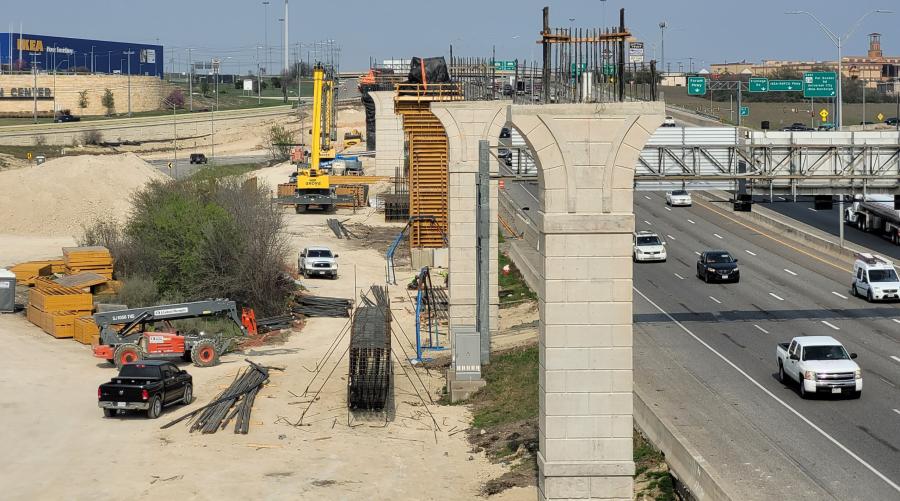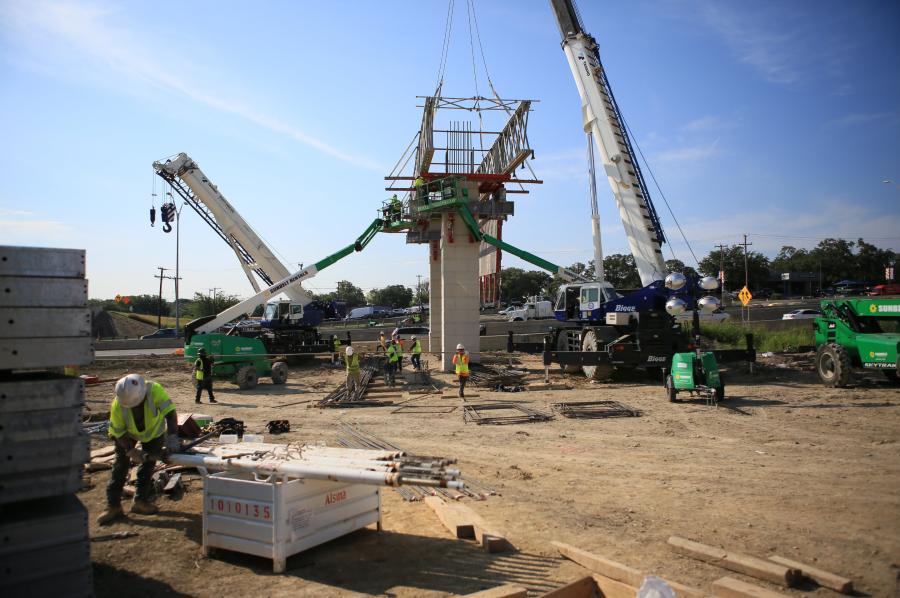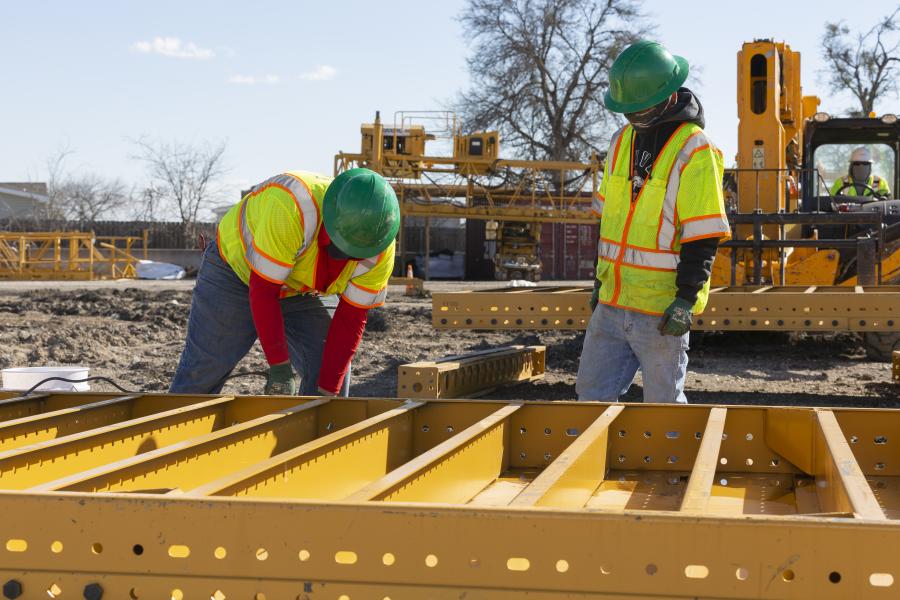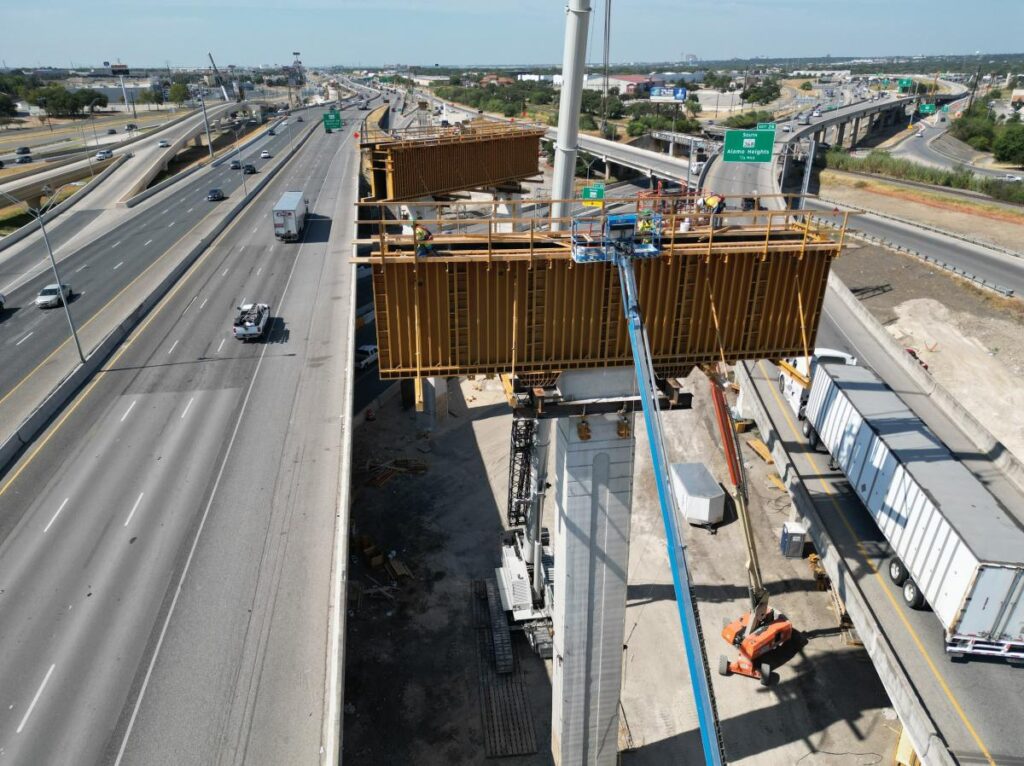Photo courtesy of Twitter/X: I35NEXCentral
Crews from Alamo NEX Construction LLC — a joint venture between Ferrovial Construction and Webber LLC — continue to make progress on the $1.5 billion Northeast Expansion Central Project (NEX), located in northeast San Antonio.
Construction for the Texas Department of Transportation’s (TxDOT) $1.5 billion I-35 Northeast Expansion Central Project (NEX) is moving forward as crews from Alamo NEX Construction LLC — a joint venture between Ferrovial Construction and Webber LLC — continue to meet benchmarks.
Construction of the design-build project, a Texas Clear Lanes Initiative, began in June 2022. The estimated completion date is fall 2027.
The 9.5-mi. project runs along I-35 from I-410 N to FM 3009 and runs through northeast San Antonio, Live Oak, Selma and Schertz in Bexar and Guadalupe counties.
Contractor’s Work
The scope of the project is massive. The elevated lanes on I-35 will provide direct connections to I-410 North and Loop 1604 West.
“The project scope of work consists of construction of elevated managed lanes between the existing main lanes and frontage roads and eight bridges and the reconstruction and widening of the Loop 1604 general purpose lanes and bridges,” Ferrovial said in a statement. “It includes more than 800 spans of bridge construction, 4,500 concrete beams, 31 million pounds of steel girders and six million square feet of bridge decks.”

Photo courtesy of Twitter/X: I35NEXCentral
“[The project] will consist of several bridge replacements, layout changes, lane additions, new frontage roads, as well as the installation of more than 132,000 feet of reinforced concrete box culverts and pipe, and utility and landscaping work,” Webber said in a statement on its website. “The construction is scheduled to take approximately 46 months.”
The widening of I-35 general purpose lanes covers the area from north of Olympia Parkway to south of FM 3009, along with reconstruction of Loop 1604 general purpose lanes and bridges from Nacogdoches Road to I-35.
“The elevated lanes will provide one high occupancy vehicle [HOV] lane and two general purpose lanes in each direction,” said Laura Lopez, a TxDOT Public information officer, San Antonio District, who noted that “the project also includes incidental construction necessary to transition the elevated lanes and connectors with the existing highways including revisions to ramps and frontage roads and accommodations for drainage, utilities, signs and other highway improvements.”
Operational improvements will see the construction of ramps to connect I-35 mainlanes to elevated lanes and the reconfiguration of entrance and exit ramps throughout the project.
Engineering and design elements are crucial to the success of the project.
“One of the biggest challenges for this project is that we have constricted work areas due to the limited room to build in the corridor,” said Lopez. “This is magnified being that 70 percent of the project scope is related to bridge construction. There is also an extensive design and construction effort that is required to complete this project on time.”
The structures are designed to meet the TxDOT Design Criteria, as well as the AASHTO LRFD Bridge Design Specifications.

Photo courtesy of Twitter/X: I35NEXCentral
“For the most part, conventional materials such as concrete and hot mix asphalt are being utilized for this project,” said Lopez.
The overall initiative for the I-35 project has been split into three separate construction phases: I-35 NEX Central, which is ongoing, and I-35 NEX South, and I-35 NEX North.
The majority of construction is occurring on weeknights to avoid traffic disruptions. TXDOT is using social media and other measures to alert motorists of ongoing temporary and longer-term lane closures, detours, and current and upcoming work at various sites along the work zone.
The overall spirit of the traffic control plan is to maintain the existing number of lanes as much as possible.
“There are instances where lanes might need to be closed for durations longer than one day, week, weekends, or in some cases, months,” said Lopez. “These closures have been incorporated into the plan for specific locations and activities to get the contractor to perform the work continuously. These locations are usually due to tight work areas where additional space is needed to complete the work safely and expeditiously.”
Project Background
“This will improve safety and mobility, address an increase in traffic growth on I-35, reduce travel time, and [better] serve regional traffic,” said Lopez. “Travel demand growth has outpaced new roadway capacity over the years on I-35. Three I-35 segments in the San Antonio District were ranked in the 100 most congested roadways list in 2019. Improvements on I-35 have not kept pace with population growth and subsequent increases in vehicular traffic over the years.

Photo courtesy of Twitter/X: I35NEXCentral
“Over the past two decades, multiple planning studies of this I-35 corridor have been conducted in search of mobility and safety solutions for the corridor,” she added. “While these studies have facilitated public discussion, valuable data collection, and recommendations for improvement, no concepts had moved from planning to implementation due to funding constraints and other competing transportation needs within the region. The elevated lane concept was derived from an I-35 Planning and Environmental Linkages [PEL] Study between the Alamo Regional Mobility Authority [Alamo RMA] and TxDOT.”
The 2018 annual Average daily traffic for the southbound direction was 97,100 vehicles on the mainlanes and 92,200 vehicles for the northbound mainlanes. According to the future traffic forecasts, the southbound lanes will see 121,800 vehicles daily and the northbound will see 115,300 daily vehicles.
“Out of those numbers, it is anticipated that about 33 percent of each of the northbound and southbound volumes will utilize the elevated lanes,” said Lopez.
Safety and mobility will be improved by adding capacity to the roadway, improving traffic operations, upgrading corridor illumination, travel time savings and reducing congestion. CEG
Read the full article here











